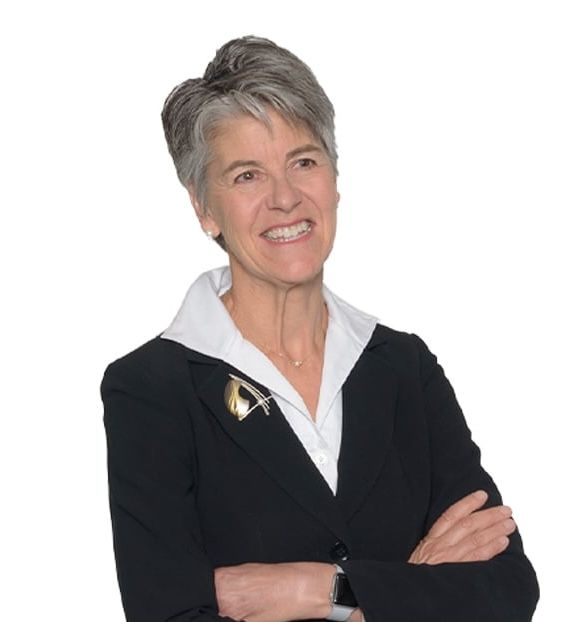Time Per Day Spent in EHR Continues to Rise for Primary Care Providers
A study of EHR workload trends reveals a concerning increase in primary care providers' time spent in the EHR post-pandemic, with providers spending 28 more minutes each workday on EHR-related tasks now relative to 2019.
Christine A. Sinksy, MD
Credit: American Medical Association

For primary care providers (PCPs), the impact of electronic health record (EHR) workload has become a pressing issue requiring more bandwidth than ever, according to a new study of EHR workload trends from pre- and post-pandemic periods.
Results of the study, which included data from 141 academic PCPs within an integrated health system, suggest providers were spending 28 more minutes in their EHR each day of scheduled clinic work relative to prepandemic workload, with increases also observed for time in orders, inbox, chart review, and notes.1
“Primary care physicians’ time in the EHR continues to grow,” wrote investigators.1 “While PCPs’ inbox time may be stabilizing, it is still substantially higher than pre-pandemic levels. It is imperative health systems develop strategies to change the EHR workload trajectory to minimize PCPs’ occupational stress and mitigate unnecessary reductions in effective physician workforce resulting from the increased EHR burden.”
For some clinicians, EHRs represent a useful tool aimed at optimizing care of patients. For many others, the EHR is representative of a time-consuming burden, with some reports indicating PCPs spend more than 15 minutes per visit with EHR-related tasks and a 2017 report from the investigators leading the current study found PCPs dedicate more than half of their workday to such tasks. As this physician shortage worsens and the population’s demands on public health increase, a greater understanding of the effects of the pandemic on EHR workload could help in guiding efforts to mitigate the impact of this workload.2,3
Together, with colleagues from the University of Wisconsin, the current study was led by Christine Sinksy, MD, vice president of professional satisfaction and practice sustainability of the American Medical Association, to explore trends in PCP EHR workload trends before, during, and after the pandemic. With this in mind, investigators designed a longitudinal study leveraging EHR use data from 141 academic PCPs within the University of Wisconsin integrated from May 2019 to March 2023. With almost 300,000 primary care patients receiving care annually, investigators obtained data related to ambulatory full-time equivalency (aFTE), visit volume, and panel size.1
For the purpose of analysis, EHR time and inbox message volume were measured per 8 hours of scheduled clinic appointments.1
Results of the analysis found the following changes in task time in the most recent study year relative to the pre-COVID-19 pandemic period:1
- Total: +28.4 Minutes (7.8%)
- Time in Orders +23.1 Minutes (58.9%)
- Inbox: +14.0 Minutes (24.4%)
- Chart Review: +7.2 Minutes (13.0%)
- Notes: +2.9 Minutes (2.3%)
Additional analysis revealed these apparent increases in workload were not limited to the traditional workday. According to results, time spent with EHR takes outside scheduled hours on days with appointments increased by 6.4 minutes (8.2%) during the period of interest while time spent on unscheduled days increased 13.6 minutes (19.9%).1
When assessing changes in PCP requests, results indicated PCPs spent received more patient medical advice requests (+5.4 messages, 55.5%) and prescription messages (+2.3, 19.5%) per 8 hours of scheduled clinic appointments, but fewer patient calls (–2.8, –10.5%) and results messages (–0.3, –2.7%). Limiting their analysis to changes seen in the final study year, results suggested total time in the EHR increased by 7.7 minutes (2.0%) and inbox time decreased by 2.2 minutes (-3.0%).1
Investigators highlighted the mean aFTE decreased 5.2% from 0.66 to 0.63 during the entirety of the 4-year study period.1
Investigators pointed out multiple limitations to consider when interpreting the results of the study. These included being lifted to time spent on specific EHR activities, limited generalizability due to being limited to a single academic system, failure to examine variation in EHR workload by physician, and not examining differences in time expenditure and message volume by specialty.1
“With high demand for asynchronous patient care, including a sustained increase in the volume of patient medical advice messages, it is imperative health systems develop strategies to change the overall EHR workload trajectory to minimize PCPs’ occupational stress and mitigate unnecessary reductions in the effective physician workforce that result from the increased EHR burden,” wrote investigators.1
References:
- Arndt BG, Micek MA, Rule A, et al. Tethered to the EHR: Primary Care Physician Workload Assessment Using EHR Event Log Data and Time-Motion Observations. Ann Fam Med. 2024;22:12-18. https://doi.org/10.1370/afm.3047
- Budd J. Burnout Related to Electronic Health Record Use in Primary Care. J Prim Care Community Health. 2023;14:21501319231166921. doi:10.1177/21501319231166921
- Arndt BG, Beasley JW, Watkinson MD, et al. Tethered to the EHR: Primary Care Physician Workload Assessment Using EHR Event Log Data and Time-Motion Observations. Ann Fam Med. 2017;15(5):419-426. doi:10.1370/afm.2121